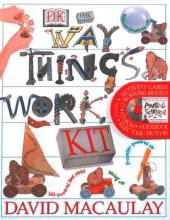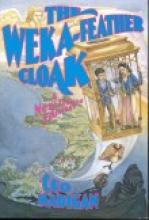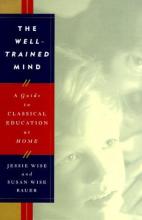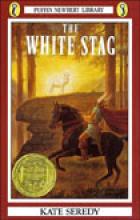No name
The Victory Garden Alphabet Book
I found this in our library's seasonal display... copyright 1992, certainly not a new title, but my love for alphabet books and vegetables together made me decide to take a look.
Product description: Bestselling author Jerry Pallotta teams up with former Victory Garden host Bob Thomson to present 26 common and not-so-common vegetables. Learn about fiddleheads, munchkin pumpkins, sweet peas, walla wallas, and more. This informative book also includes a brief introduction to soil preparation and seed planting. 30 color illustrations.
These times of economic slump and contaminated foods from doubtful origins is seeing a huge growth in home gardening. I have seen this new trend being referred to as "Victory Gardens" all over again. This is a nice and informative book for children, most especially children whose parents want to encourage to get out there and help! The illustrations are very realistic and seem to be based on photos.
The Virtue Driven Life
The Way Things Work Kit
This kit provides dozens of special cardboard pieces, wooden dowels string, wheels, etc. for making simple machines (inclined planes, scales, etc.) that can be used for understanding basic concepts of mechanics – how things work. Based upon the bestselling "The Way Things Work" by David Macaulay, the kit continues the theme of Wooly Mammoths as props and characters for use in these experiments. (Included in the kit are two cardboard Wooly Mammoths to which you affix a certain number of identical coins to provide a common weight for some of the experiments.) A thin, but colorful book (32 pages – glossy cover) takes you through the scientific explanations of the various principles involved in the experiments. 5 1/2 " x 8 1/2" glossy full color cards provide detailed step-by-step instructions (with the typical DK photos) for each experiment.
Although some of the experiments took a little more finesse than might have been expected (but understandable due to the limitations of the materials) and some of the instruction cards were a little hard to follow, overall we found this to be an exceptional value – a lot of bang for your buck at the $30 retail price. We found that a dozen or so ziploc bags were very helpful in keeping the various pieces straight and, with a little patience, all the pieces can be stored in the box.
The biggest hit in our family so far was the Pinball Science CD ROM which also came with the kit.  The game includes three pinball arenas each having a specific theme (village, island and moon). The science part involves answering questions in order to earn the right to place certain fixtures on each pinball game. Without the fixtures, scores are lower and players are unable to advance to the next level. With each question, the player has the option to "Research Answer". This feature takes the player to the appropriate page in an interesting, humorous and interactive log book which explains the functioning of various devices such as windmills, faucets, hot-air balloons, gears, and rockets. Some of the graphics are a little silly (Wooly Mammoths in bikinis on the island and such), but I didn't find anything really objectionable.
The game includes three pinball arenas each having a specific theme (village, island and moon). The science part involves answering questions in order to earn the right to place certain fixtures on each pinball game. Without the fixtures, scores are lower and players are unable to advance to the next level. With each question, the player has the option to "Research Answer". This feature takes the player to the appropriate page in an interesting, humorous and interactive log book which explains the functioning of various devices such as windmills, faucets, hot-air balloons, gears, and rockets. Some of the graphics are a little silly (Wooly Mammoths in bikinis on the island and such), but I didn't find anything really objectionable.
The Weight of a Mass
The best and most memorable lessons are taught through stories, and this gorgeous picture book will teach an unforgettable one. The Weight of a Mass is written in a fairy-tale style and enhanced by rich watercolor illustrations. It will appeal equally well to both boys and girls through countless re-readings.
Said to be based on a true event, the story unfolds as a poor, elderly woman begs for a crust of bread in a bakery. The baker scoffs at her request and demands to know what she will pay. Penniless, the woman offers to hear Mass for the giver of the bread in exchange. To prove that her offer is worthless, the baker writes "One Mass" on a slip of paper and places it on one side of a balance. As more and more delicacies are added to try to balance the scale, the slip of paper demonstrates miraculously that there is nothing on earth of greater value than the Mass.
This book is the perfect gift for a First Communicant, an adult who needs a gentle reminder of the value of their Faith, or anyone who enjoys reading to a child. Our children each have a "treasure chest" of things that they will take with them when they are grown and begin their own homes and families. I am purchasing a copy of this book for each of my children to place in their treasure chests. It deserves all of the awards that it has earned!
The Weka-Feather Cloak
Now for a little of the plot.... Danny Mago is a small, quiet 16 year old who is mercilessly picked on by his schoolmates, but recognized by his teachers as having remarkable artistic abilities. Knowing that his widowed mother is struggling to financially support Danny and his handicapped sister Angela, the deputy headmistress of his school offers him a job helping out on the grounds of the nun's convent and working as artistic assistant to Mother Madeleine, a renowned local artist. In cleaning up and cutting back overgrown portions of the convent grounds, Danny discovers an ancient elevator through which he visits some interesting historical characters. Soon he becomes involved in a contest to plan a backdrop to the altar of the new cathedral and a strange Turkish girl searching for an ancient painting of Our Lord (the Mandylion - rhymes with pavilion, not dandylion). Throw in an ancient Maori cloak and some mysterious trips courtesy of his guardian angel, and the result is a rather enjoyable, occasionally hair-raising, adventure story in a Catholic framework with a New Zealand setting. (There are interesting artistic sub-themes as well.) The author has included a glossary of New Zealand terms and an overview of some of the religious references. My two year old highly enjoys just hearing the words in the glossary which sound very funny to her - aniwaniwa, kohekohe, tiki, etc.
The author has a humorous writing style that should be appealing to modern readers. Leo Madigan, who has also authored a number of books about Fatima, skillfully interweaves a Catholic way of looking at things, but never at the expense of a good story. I especially like the sub-plot concerning Danny's sister Angela, who is seriously disabled. Her relationship with Danny is beautifully portrayed (they communicate with each other using their own system of sign-language, he confides in her during difficult times). Also, unlike a number of stories with crippled heroes who are cured in the end (like If All the Swords in England and The Hidden Treasure of Glaston), Angela's part of the story wraps up happily even though she is not completely cured of her malady. I appreciate this unique angle, especially for those who are dealing with such difficulties every day for the rest of their lives. There wouldn't be much hope for these much-beloved souls if happiness depended on a miraculous physical cure.
I hope you and your children (best for ages 12 and up) enjoy the story as much as I did.
This title was donated for review by Bethlehem Books
The Well-Trained Mind
Jessie Wise started homeschooling her daughter (and co-author Susan Wise Bauer) in 1973. In this book they elaborate ideas and resources for a complete classical curriculum from preschool through high school. From a Catholic standpoint, I think this book would be most useful for those who are already using Designing Your Own Classical Curriculum, but looking for additional ideas. I found the explanations of the stages of the Trivium very helpful as well as some of the ideas for types of writing assignments, lists of subject material and tidbits on scheduling and record-keeping. I also found the order in which certain materials are to be studied (particularly for History which they recommend studying in chronological fashion starting in first grade) to be more to my liking than the order proposed in Designing Your Own Classical Curriculum because I'd like to have my children studying the same topic in History at the same time. The authors had some important things to say about the problems with television and I really enjoyed (as a bit of a vindication of my own educational ideas I suppose) the story about Dr. Seuss and why he wrote The Cat in the Hat.
I would be reluctant to give this book to a mother who is already feeling overwhelmed with homeschooling or one who has just pulled her children out of a conventional school and is beginning to homeschool later in the game. Although it is not intended to be, I think it might be intimidating at this stage. Although the authors (who are not Catholic) don't fall into a number of "traps" regarding the Catholic Church that one might expect (as is clear from their segment on Religion), some of the resources (especially with regards to History) contain biases against the Catholic Church and should be used only with caution. A great deal of their recommended materials are those recommended by Greenleaf Press and/or published by Dorling Kindersley - I use materials from both of these sources, but many should be approached with caution if not avoided altogether.
I have not read the book in its entirety yet (I finished the Grammar segment and skimmed the rest). Overall, I found it worthwhile reading, but not "required reading", and some things should be taken with a grain of salt.
You can find out more about the book at the Well Trained Mind website run by co-author Susan Wise Bauer.
The White Stag
The two sons do in fact lead the people west following a mysterious white stag which seems to be leading them along. They find a good land and stay there many years but it is not the land that was foretold. While in this land, Hunor and Magyar capture and marry fairy "moonmaidens." Hunor and his wife have a son named Bendeguz, The White Eagle. Among the people a slight rift appears and some become more attached to fierce Hunor and his son and others to the more gentle Magyar. The entire tribe moves on, however, and as they leave Asia and move into Europe, they become more fierce. The are in constant battle with the people of the lands they pass and end up a plundering, warring tribe. Finally they find a place to build a stronghold between the Volga and Don Rivers. Here Bendeguz marries a woman from the peoples they have conquered and Attila is born. The tribe then splits and Bendeguz, with Attila and his followers, move further west while Magyar and his followers stay. The Huns fight on and on with Attila as their leader and become the most feared people in the west. The story ends with the fulfillment of the prophecy, the finding of the promised land, and Attila leading a festival in thanksgiving to the great god Hadur.
This story could not be considered a history of the Huns, but might be read as a supplement to a study of the times. It is as the Greek myths are to the history of the Greeks and sheds light on the religion and traditions of the ancient Huns. It is poetically and lovingly written and full of beautiful illustrations. Since it is somewhat short in length, ( 95 pages of which 39 are full page illustrations), it can be read fairly quickly.
Recommended for grade 4+
Newbery Medal Winner
The Winged Watchman
Note: If having your children "believe in Santa Claus" is important to you, there is a chapter which should be approached with caution.
Click here for Discussion Questions
The Winged Watchman (audio)
Throughout the book in fact, they, as well as their parents, are faced with choices, choices that involve risks, even death. Should they help the young girl left lying on the side of the road, the airman hiding in the mill, the man escaping from deportation? The risks they face are very real as they soon find out when their neighbor and his son, the same age as Joris, are taken away after British airmen are found hiding in his barn. As Joris stares at his classmate's empty desk in school, he is reminded all too vividly that his neighbor could be him.
Who is it that could have done such a wicked thing as to reveal the airmen's presence? It could be none other that Leendert Schenderhans, another neighbor boy, only not just a "boy" but a young man of eighteen, who had become a landwatcher, a Dutchman who enforces the laws of the Nazi occupation.
He too plays a critical part in the story. Joris has to only observe how he acts to realize that he does not want to be like him, cruel, selfish, lazy, and greedy. The reader doesn't have to be told he is mean, through his actions, we become all too keenly aware of his lack of virtue. More than just a nasty person, he is a person to be feared, because of his power.
Not just another story about WWII, this is a story every child should read or hear, because it not only offers children a very real view of history, but it also explores timeless issues they have to deal with every day, even today. How can I forgive my enemy?
This is a theme that is repeated throughout the story. Especially memorable is the scene when Joris comments that he thought he would get holes in his knees from praying for so many people. The story goes on to say, "At first she [mother] would not pray for the Germans, though Father said that was wrong. 'We have to pray for our enemies,' he said. 'What sort of Christian are you?' So then Mother prayed for the Germans too."
You won't be disappointed! This is a story to treasure, made especially enjoyable by a wonderful narrator, who makes this an absolute listening pleasure.
Click here for Discussion Questions Click here to listen to an audio sample on the Bethlehem Books website
Unabridged audio book, approximately 4 hours, 3 tapes or 4 CDs
Click here for Discussion Questions








